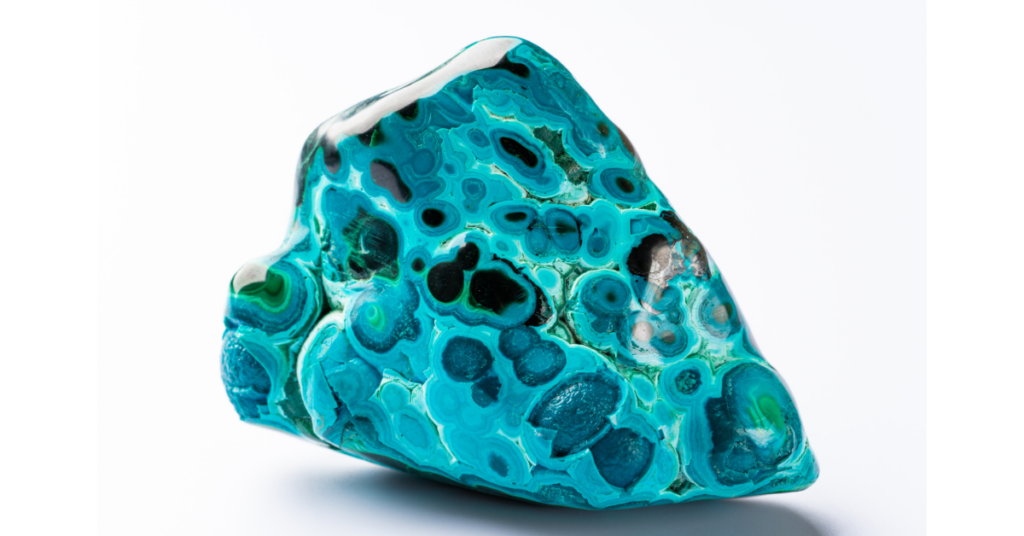Chrysocolla – Crystal Healing
Chrysocolla takes its name from the Greek words “chrynos” meaning gold, and “kolla” meaning glue. It is sometimes confused with turquoise because it looks so similar.
Other names: Nitrum, Orobitis, Crisocolla, Verdetto, d’Oro, Viride, Verde diBanda, Krysocaolla, Hispanicum.
Colour and description
Blue / green containing copper, which contributes to its colour. It is very soft unless it is combined with quartz, which makes it much harder.
Where is it found
Arizona, Utah, New Mexico, Pennsylvania, Israel, Zaire, and the UK. It is found wherever copper is present. If you find malachite, azurite, and cuprite, then you are bound to find chrysocolla, because they are all copper based.
Hardness: 2 in its natural state, and up to 7 when it is combined with quartz.
(Talc is the softest at number 1 and diamond the hardest at number 10.)
Structure: Monoclinic crystal.
Uses
Crystal healers use chrysocolla for the following conditions:
Digestive problems: Chrysocolla works as a preventative measure against ulcers.
Balances hormones: It is a very good stone for women, as it helps with PMS and other menstrual problems.
Extracts heat: The copper in the stone draws out heat, making it a useful stone to use in cases of arthritis or fevers.
Other uses: Thyroid problems, heart problems, and regulation of insulin in the pancreas.
Element: Water


